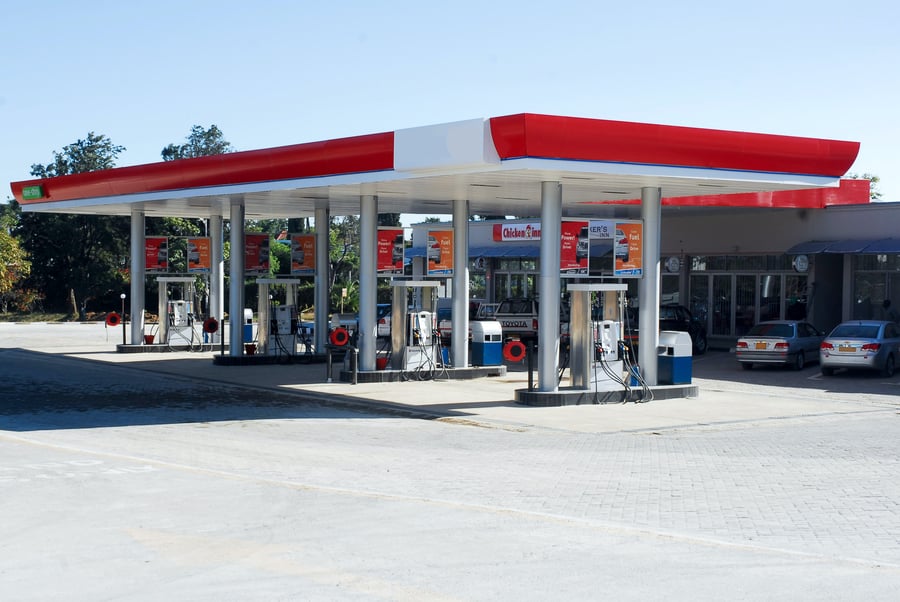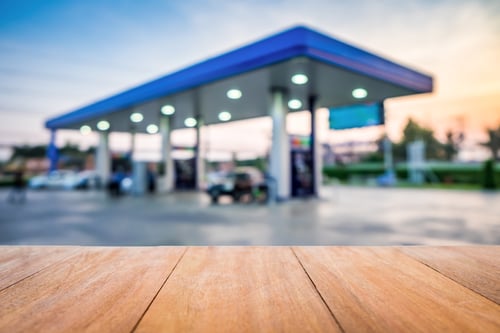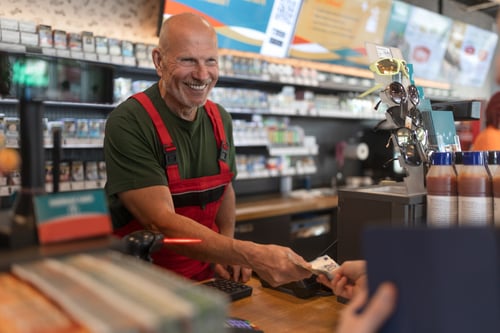
It feels like it has been years since March when many Americans — except for essential workers and businesses, including convenience stores — were ordered to stay at home to slow the spread of COVID-19.
As the pandemic ebbs and flows from severe and partially controlled, the disruption to our normal lives and businesses continues to remain a major concern for everyone. Will my loved ones and I be safe and healthy? What will happen to my job or business? What does the future look like? During this period of uncertainty, innovation, adaptability, and a business's ability to evolve perspective will undoubtedly help reshape the convenience retail industry for years to come.COVID-19 has fundamentally changed the way consumers shop and how often they leave their homes to travel for business or leisure. Whether you are one of the 64% of independent convenience store operators in the U.S. or a large chain, customers are placing a greater emphasis on those who offer clean, safe, and sanitary shopping experiences. In connection with the COVID-19 pandemic, convenience retailers play a crucial role in making sure their business adheres to regulations and recommendations at all levels of government, including the Center for Disease Control (CDC), in order to ensure customer and public health safety. Understanding this shift in consumer behavior is critical for a convenience store’s survival, retailers should take note!
Every day, convenience stores in the United States meet the fueling and convenience needs of an estimated 165 million customers. When the initial shutdown of the U.S. economy began, businesses across multiple sectors saw a drastic decline in sales and millions of Americans found themselves out of work or forced to stay within the confines of their homes.
Today’s convenience store model relies on an active workforce and a society that promotes commuting in order to capture business. The designation of convenience stores as essential businesses helped keep doors open; however, the abrupt shutdown of the U.S. economy meant retailers could no longer rely on past trends to predict future business. According to the U.S. Bureau of Labor Statistics (BLS), in August 2020, the unemployment rate declined by 1.8 percentage points to 8.4 percent, and the number of unemployed persons fell by 2.8 million to 13.6 million. Both measures have declined for 4 consecutive months but are higher than in February, by 4.9 percentage points and 7.8 million, respectively.
To make matters worse, a historic fall in crude oil prices on April 20, 2020, specifically West Texas Intermediate (WTI) which fell 218.59% and traded at -$37.63, placed incredible strain on upstream, midstream, and downstream oil and gas businesses.
For an industry that generated approximately $648.8 billion in motor fuels and in-store sales in 2019, volume is a key factor for success. A dip in consumer demand can often spell trouble for even the most savvy and seasoned convenience retailer. Luckily, recent data shows that in-store merchandise sales have bounced back.
According to the National Association of Convenience Stores (NACS), merchandise sales performed extremely well in June 2020. Per store/per month in-store merchandise sales (excluding cigarettes) increased 13.4%, compared with June 2019, while cigarette sales grew 7.4%, and beer sales increased 37.1%. Ice cream/frozen novelties continued to enjoy a significant sales increase, up 37.8% in June compared with June 2019. Although per store/per month fuel sales were down in June compared with June 2019 (-29.8%), gross profit dollars increased 31%.
A considerable amount of work lies ahead before business and life can begin some semblance of pre-COVID-19 normality; for convenience retailers, focusing on growth and innovation should be top-of-mind in order to guarantee their survival. COVID-19 has indeed presented several challenges, but it has also created opportunities for convenience retailers to reimagine the products and services that can be offered.
There are a range of technological platforms where convenience retailers can optimize their exposure in hopes of creating meaningful connections with customers. In an industry hyper-focused on providing speed and convenience, a growth-minded approach with marketing dollars allocated directly to customer acquisition should be top-of-mind. For example, a well-thought out Google Ads (formerly known as Google AdWords) program should be tailored for new and existing customers with merchandise deals, community involvement, employee success stories, and other content that targets each customer segment in a way that expresses unique value.
Growth can be achieved through innovation. Primarily, convenience retailers should focus on incremental, sustaining, and disruptive levels of innovation. Incremental innovation can be something as small as products you have on hand that are offered to thriving industries. Take for example businesses that have been deemed essential during the COVID-19 pandemic — consider offering healthcare professionals who have seen an increase in demand for their services are working longer hours free coffee or discounts on energy drinks.
Sustaining innovation expands on value by adding a product or service you already offer. Sticking with the healthcare professionals and coffee scenario, pivoting a store clerk’s responsibilities to focus on coffee service during peak hours, including ensuring freshness, offering to pour, or coordinating a delivery to local healthcare offices. Going above and beyond in service and sharing those stories online can translate into a tremendous ROI for convenience retailers.
Lastly, disruptive innovation requires businesses look inward at elements that can destroy their existing business model. What forces are working to compete with the convenience store industry and how might they be successful? The opportunities for disruption can come via new technology, emerging industries, mergers and acquisitions, economic recessions, changes in community development, regulations, and much more. Staying relevant requires an innate ability to look down the road and have a business model in place that identifies ways to deliver customer value and transform strategy in an instant.
With so much uncertainty in today’s economic climate, it’s more important than ever to base decisions impacting business on hard data. Studying industry trends, foot-traffic reports, and motorist habits can help provide convenience retailers with insights of what to expect from consumers and how to prepare their business to shift in demand. In order to protect the safety of customers, employees, and businesses, the convenience store industry should continue to find new ways to adapt business models to overcome challenges and take advantage of new opportunities in the COVID-19 era.
PWM is dedicated to serving our clients with quality products and outstanding customer service, contact us to learn more about how we can serve you!
Reference Links
https://www.bls.gov/news.release/pdf/empsit.pdf
https://markets.businessinsider.com/commodities/oil-price?type=wti
https://www.convenience.org/Media/Daily/2020/Aug/19/3-In-Store-Merchandise-Sales-Are-Strong_Research






